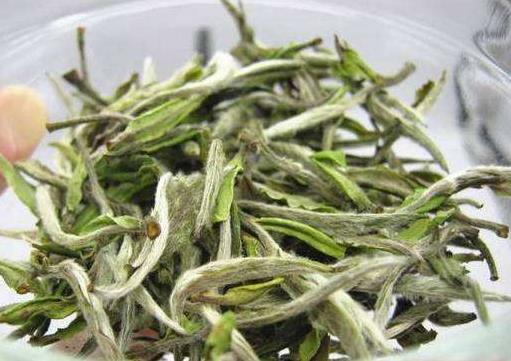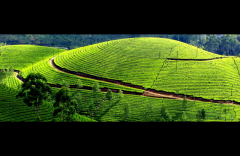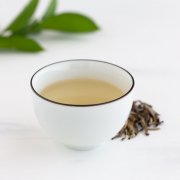Fuding white tea ten famous brands Fuding white tea classification and grading system detailed explanation
The demand for tea with a "white" label is growing rapidly. Just a decade ago, the market was clear: purebred Chinese native varieties and a few individual varieties from Sri Lanka and Kenya had narrow and unique ways of growing, harvesting and processing. Silver needles, white peonies and longevity noodles basically constitute the market. They are determined by buds, not leaves. The name of this somewhat misleading category comes from Shenghe and Fuding in Fujian Province, China, which is of origin and is still the main producing area. "White" is not a green to black color, but refers to the key feature of Fujian tea buds: there are fluffy white hairs at the bottom of the tea buds, which have evolved to resist insects. The super luxurious Silver Needle Tea dates back to the 10th century and has always been regarded as a tribute tea for emperors. It was, and still is, budding tea-unopened leaves. In the 1920s, the production economy began to put pressure on growers and businessmen. White peony-- white peony-- added two tender leaves under the bud. Shoumei, also known as longevity eyebrow, was introduced in the late 1960s; this kind of leaf is not so delicate and consists mainly of mature leaves. The global supply is expanding with unique and extensive tea from Kenya, Rwanda and Malawi in Africa; Nilgiris and Assam in India; Darjeeling, Sikkim and Nepal in the Himalayas; Vietnam; Thailand; Colombia; and even Hawaii. This is a complex market with many clear "possibilities", "buts" and "imperfections" because they go beyond Fuding's model. Now includes near-green tea; one is the Indian variety Assamica, mainly used to produce all-black grapes, the other is Chinese white grape (China Sinsensis), which is the main variety of green grapes and purebred Chinese white grapes; steamed and fried instead of or added to wilt; light Darjeeling flavors and stronger flavors compare the refinement of classic white wines; the quality and characteristics of mixed and ripe leaves vary.

The American Tea Masters Association (American Tea Masters Association) said the lack of a unified definition of the global tea industry had led to "continuing chaos". It failed to reach a clear consensus among its members. The common feature of white tea labels is the combination of highly selective buds, whose concentrated nutrients significantly determine their biochemistry, as well as their equally selective treatment. The plump Fuding buds come from about five major varieties, especially the unique Dabei and Daye Baihao-"Dabai". They provide extra glucose, making them sweeter than mature leaves. They are rich in antioxidants, amino acids, enzymes and 1-theanine, which are the best ingredients in tea. They claim that white is good for health, and therefore give white double honor: first, the chemical composition of white, and second, white is related to light and purity. The advertisement is based on the reputation of green tea and positions white tea as more beneficial. No tea can be purer and more natural than the best Fuding buds. They are collected a few days before they begin to grow leaves. The key to dealing with them is that they are not actually treated, but let them wither, so they hardly oxidize. When you cut open the apple, you will see oxidation; it soon begins to turn brown and dry. Fuding is a model of white tea. However, it does not establish anything standard, consistent, or universal. Now, there is really no such category as white tea: nothing is standard or predictable. This command of budding and withering is more respected in spirit than in words. An obvious by-product of white tea craftsmanship and context is that the most common adjective in discussions and comments is "rare". Of course, it is a comfort to use the word "rare" to describe "expensive".
Important Notice :
前街咖啡 FrontStreet Coffee has moved to new addredd:
FrontStreet Coffee Address: 315,Donghua East Road,GuangZhou
Tel:020 38364473
- Prev

What is the best tea in Nepal? How much is the authentic Himalayan black tea per jin?
Twenty years ago, the Nepalese government turned its attention to tea, partly to alleviate rural poverty and, on the other, to generate foreign income through exports of sustainable production. Exports of Himalayan Nepalese tea have expanded, and long-term investment since 2001 paid off, when Nepal first adopted
- Next

What kind of tea ranks first in Fuding white tea? What's the difference between Indian white tea and Fuding white tea?
Here are some clips to show us how exquisite, accurate and labor-intensive high-end white production is. Harvest. Gentle care begins in the field. The white treatment is to protect the delicate leaves from scraping and even the basket should be kept small to minimize stress. Only tender and consistent in shape
Related
- The milk tea cup becomes smaller?! Overlord Tea Girl launches a new "Return to Yunnan" series
- Accused of selling counterfeit and high-priced coffee beans! Well-known boutique coffee brand "Oukelao" bowed and apologized!
- How to make espresso dumplings? Can I eat coffee and glutinous rice balls together?
- Save the unformed and stagnant powder cakes in one second! What is the problem with stagnant water in the powder bowl of the espresso machine?
- What does hand-brewed coffee stop mean? Why is it not recommended to make coffee by hand?
- Is it normal to smell like coffee? Why does coffee smell like alcohol? What's wrong with the strong smell of cold extract ice dripping ice brewed coffee?
- How to solve the problem that hand-brewed coffee extraction takes too long? Why is the water flowing so slowly when making coffee?
- The main points of making Australian white coffee, the proportion details, how does Australian white properly foam and blend the flowers?
- Can ice water make cold extract coffee? What is the difference between room temperature water and ice water for making cold coffee?
- What milk is best for making latte and white Dirty coffee? What is the difference between different brands of fresh milk and pure milk for making coffee?

